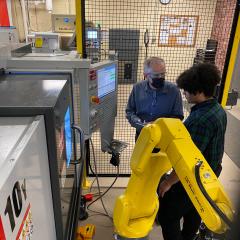
Manufacturing evolved in the United States through geographic clusters that produced competitive advantages in expertise, scale of operations, research prowess, and skilled labor. The origin of the automotive sector is an example of a regional cluster, with vehicles assembled in the Detroit area from parts and components manufactured in the upper...



